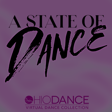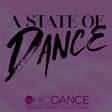
Taking Note with Dr. Valarie Williams
Season One, Episode Three: This month's guest is Labanotation expert, Dr. Valarie Williams. Dr. Williams is a Professor at The Ohio State University, Department of Dance. She is Director of the Dance Notation Bureau Extension Center for Education and Research at Ohio State. Dr. Williams teaches, stages, and documents movement nationally and internationally. She is a 1987 Presidential Scholars in the Arts honorable mention recipient in ballet, she apprenticed at the Paris Opera Summer Program in Evian les Bains, France; toured with Lincoln Center Institute Touring Programs for four years serving as dance captain; and performed with the Dallas Opera and Sharir Dance in Austin, Texas. Williams holds a BFA from The Juilliard School, an MFA and PhD from Texas Woman’s University, and is a Certified Professional Notator.
OhioDance A State of Dance is a six-part series coming out the fourth Friday of each month through November 2023.
This podcast is driven by the OhioDance mission to secure the foothold of dance in Ohio through increasing visibility, firming viability, and elevating the position of dance in Ohio.
In 2016, a five-person team set out on a mission to capture the achievements of persons and institutions who have shaped the intricate diversity of dance history and practice within the state of Ohio and weave them together in an easily accessible digital format. This we call the OhioDance Virtual Dance Collection. As of 2023 we have highlighted 33 individuals and institutions. The team has traveled over 5000 miles and interviewed 100 individuals in all five regions of Ohio. vdc.ohiodance.org
If you like what you are listening to and are not a member of OhioDance, you can go to ohiodance.org and click the membership button to join and receive the many benefits that come with your membership. You can also donate through our purple donate button.




